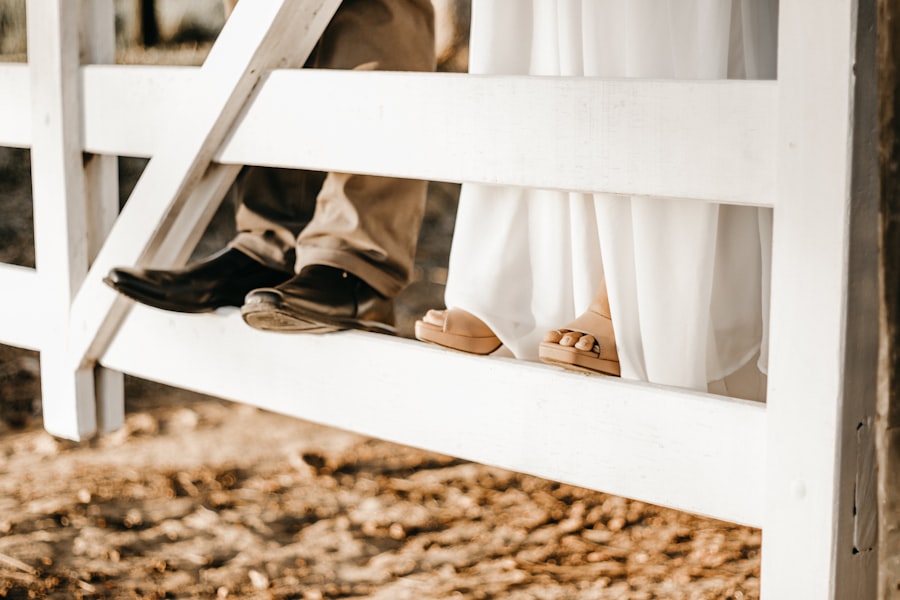As we approach the big day, one of the most crucial tasks on our checklist is to finalize the seating arrangements. This process requires careful consideration and a keen understanding of our guests’ relationships and dynamics. We need to create an atmosphere that fosters joy and connection, ensuring that everyone feels comfortable and included.
To achieve this, we can start by listing all our guests and categorizing them into groups based on their relationships—family, friends, colleagues, and acquaintances. This will help us visualize how to best arrange the tables and seating to encourage mingling and conversation. Once we have our guest list organized, we can begin the actual seating chart.
We should consider factors such as family dynamics, friendships, and any potential conflicts that might arise if certain individuals are seated together. It’s essential to strike a balance between keeping close friends together while also introducing guests who may not know each other well. We can use tools like online seating chart planners or even a simple spreadsheet to help us visualize the layout.
After drafting our initial plan, we should review it multiple times, seeking input from trusted friends or family members who can provide valuable insights. This collaborative effort will ensure that we create a seating arrangement that reflects our vision for the day.
Key Takeaways
- Finalize seating arrangements to ensure all guests have a place at the wedding reception
- Confirm vendor details and timelines to ensure everything runs smoothly on the big day
- Coordinate with the wedding party to ensure everyone is on the same page and ready for the wedding
- Confirm guest RSVPs and dietary restrictions to accommodate all attendees
- Prepare and pack wedding day emergency kits to handle any unexpected situations
Confirm Vendor Details and Timelines
With the seating arrangements in place, our next step is to confirm all vendor details and timelines. This stage is vital for ensuring that everything runs smoothly on the wedding day. We should reach out to each vendor—caterers, florists, photographers, and musicians—to confirm their availability and finalize any last-minute details.
It’s important to have a clear understanding of what each vendor will provide and when they will arrive at the venue. We can create a detailed timeline that outlines when each vendor is expected to set up, perform their services, and pack up afterward. In addition to confirming details with vendors, we should also establish a point of contact for each one.
This will streamline communication on the wedding day and help us address any issues that may arise quickly. We can compile this information into a shared document that includes contact numbers, arrival times, and specific responsibilities for each vendor. By taking these proactive steps, we can alleviate potential stress on the wedding day and ensure that everything unfolds according to plan.
Coordinate with the Wedding Party

Coordinating with our wedding party is another essential aspect of our preparation. Our wedding party consists of those closest to us—friends and family who will play significant roles in our celebration. We should schedule a meeting or group chat to discuss expectations, roles, and responsibilities leading up to the wedding day.
This communication will help everyone feel informed and engaged in the planning process, fostering a sense of camaraderie among our closest supporters. During this coordination phase, we can also discuss attire, hair and makeup appointments, and any pre-wedding events such as rehearsal dinners or bridal showers. It’s important to ensure that everyone is on the same page regarding timelines and expectations for these events.
By fostering open communication and collaboration within our wedding party, we can create a supportive environment that enhances the overall experience for everyone involved.
Confirm Guest RSVPs and Dietary Restrictions
As we finalize our plans, confirming guest RSVPs and dietary restrictions becomes a priority. Knowing who will be attending allows us to make necessary adjustments to seating arrangements, catering orders, and other logistical details. We should reach out to any guests who have not yet responded, gently reminding them of the importance of their RSVP for our planning purposes.
This follow-up can be done through phone calls or personalized messages, making it clear that their presence is valued. In addition to confirming attendance, we must also inquire about dietary restrictions or preferences. This information is crucial for ensuring that all guests feel accommodated during the reception meal.
We can create a simple form or survey for guests to fill out when they RSVP, allowing them to indicate any allergies or dietary needs. By taking these steps, we demonstrate our commitment to making everyone feel welcome and cared for on our special day.
Prepare and Pack Wedding Day Emergency Kits
As we draw closer to the wedding day, preparing and packing wedding day emergency kits is an essential task that should not be overlooked. These kits serve as a safety net for unexpected situations that may arise during the celebration. We can start by gathering items such as sewing kits for wardrobe malfunctions, stain removers for spills, pain relievers for headaches, and extra makeup for touch-ups.
Additionally, we should include items like safety pins, bobby pins, tissues, and even snacks to keep everyone energized throughout the day. We can also enlist the help of trusted friends or family members to assist in assembling these kits. By delegating this task, we not only lighten our load but also ensure that we have multiple kits available in different locations—one for us, one for the bridal party, and perhaps another for family members.
Having these emergency kits on hand will provide peace of mind as we navigate through the day’s events, knowing that we are prepared for any unforeseen circumstances.
Create and Distribute Wedding Day Timelines

Creating and distributing wedding day timelines is another critical step in our planning process. A well-structured timeline helps keep everyone informed about the schedule of events throughout the day. We can start by outlining key moments such as hair and makeup appointments, transportation times, ceremony start times, and reception activities.
By breaking down the day into manageable segments, we can ensure that everything flows smoothly. Once we have drafted our timeline, it’s essential to share it with all relevant parties—our wedding party, vendors, and family members who will be involved in various aspects of the day. We can distribute printed copies or digital versions via email or group messaging apps.
This transparency allows everyone to know what to expect and when to be ready for their respective roles. By keeping everyone informed and aligned with the timeline, we can minimize confusion and create a more enjoyable experience for all involved.
Confirm Transportation and Accommodation for Out-of-Town Guests
As we finalize our plans, confirming transportation and accommodation for out-of-town guests is an important consideration. Many of our loved ones may be traveling from afar to celebrate with us, so it’s essential to ensure they have a comfortable experience during their stay. We can start by researching nearby hotels or accommodations that offer group rates or special deals for wedding guests.
Providing this information on our wedding website or through direct communication will help guests make their arrangements with ease. In addition to accommodations, we should also consider transportation options for our guests on the wedding day itself. If our venue is not easily accessible or if many guests are staying at a hotel nearby, arranging shuttle services or carpooling options can be incredibly helpful.
By coordinating these logistics ahead of time, we demonstrate our thoughtfulness toward our guests’ needs while also alleviating any potential stress they may experience during their travels.
Double-Check Marriage License and Legal Documents
Finally, as we approach our wedding day, double-checking our marriage license and legal documents is an essential task that cannot be overlooked. Each state has its own requirements regarding marriage licenses, so it’s crucial that we familiarize ourselves with these regulations well in advance of the ceremony. We should ensure that we have all necessary documents ready—such as identification and any required forms—so that there are no last-minute surprises.
In addition to the marriage license itself, we should also consider any other legal documents that may be relevant to our situation—such as prenuptial agreements or name change paperwork if applicable. By taking the time to review these documents thoroughly before the wedding day arrives, we can approach our ceremony with confidence and peace of mind knowing that everything is in order. In conclusion, as we navigate through these final preparations leading up to our wedding day, each task plays a vital role in ensuring a seamless celebration filled with love and joy.
From finalizing seating arrangements to confirming vendor details and coordinating with our wedding party, every step contributes to creating an unforgettable experience for ourselves and our guests alike. By approaching these tasks with diligence and care, we set the stage for a beautiful beginning to our new life together.
